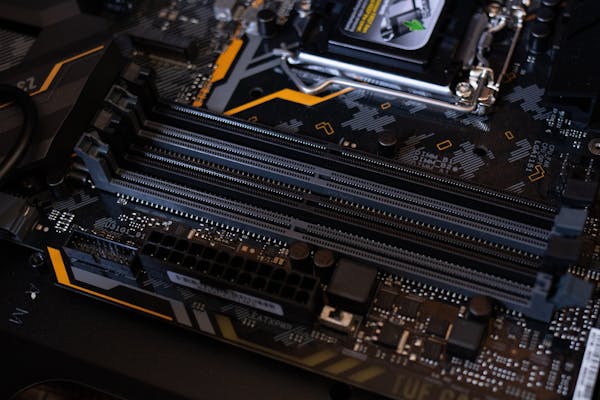Chưa phân loại
Straightforward Review on Mobile IPs for Ad Verification Today May 2025

Exploring Mobile 4G Proxies
In today’s digital landscape, 4G rotating proxies have gained prominence for maintaining online privacy.
Defining 4G Rotating Proxies
These proxies utilize cellular data connections to provide changing IPs to users. Unlike static proxies, they rotate IPs after set intervals, reducing detection risks.
Source article: rebrand.ly
Mechanism Behind 4G Rotating Proxies
When connected, a dynamic IP from a mobile network is provided. These IPs are switched periodically, hindering surveillance.
Why Opt for 4G Rotating Proxies
- Enhanced Anonymity: Dynamic IP rotation obscures user identity.
- Bypassing Geo-Restrictions: Changing IPs allow access to restricted content.
- Lowered Detection Rates: Frequent IP changes prevent bans.
Practical Implementations
- Web Scraping: Rotating IPs prevent scraping blocks.proxies reduce account bans.
- Competitor Analysis: Changing IPs validate ad placements.
- o Consider}
Before selecting a provider, consider:
- Diversity of IP Addresses: A larger pool reduces repetition.
- IP Change Intervals: Determine if the service offers customizable intervals.
- Geographical Coverage: Access to multiple regions broadens usability.
Limitations to Be Aware Of
- Pricing Structures: 4G proxies can impact budgets compared to other types.
- Connection Stability: Mobile networks might experience fluctuations.
- Ethical and Legal Considerations: Ensure usage avoids illicit activities.
Conclusion
Mobile 4G proxies enhance online privacy, positioning them as essential tools in modern internet usage.
Understanding the Technical Mechanisms of Mobile 4G Proxies
Within the sphere of online anonymity, 4G rotating proxies have emerged as pivotal tools for bypassing geo-restrictions.
What Are 4G Rotating Proxies?
4G rotating proxies leverage cellular data connections to assign dynamic IP addresses to users. Unlike static proxies, they change IP addresses periodically, improving security.
Mechanism Behind 4G Rotating Proxies
When activated, users receive a 4G network IP. These IPs change after specific durations or actions, making tracking difficult.
Advantages of 4G Rotating Proxies
- Enhanced Anonymity: Dynamic IP rotation masks real IP addresses.
- Bypassing Geo-Restrictions: Changing IPs facilitate unrestricted browsing.
- Minimized Blocking Risks: Frequent IP changes avoid detection systems.
Practical Implementations
- Web Scraping: Rotating IPs maintain access to target sites.
- Automated Posting: Dynamic proxies facilitate automation.
- Ad Verification: Changing IPs simulate diverse user locations.
Choosing the Right Proxy Service
Before selecting a provider, consider:
- IP Pool Size: A larger pool reduces repetition.
- Rotation Frequency: Determine if the service offers customizable intervals.
- Location Options: Access to multiple regions broadens usability.
Potential Challenges
- Cost Implications: 4G proxies often have higher costs compared to other types.
- Performance Issues: Mobile networks can be less stable.
- Ethical and Legal Considerations: Ensure usage respects terms of service.
Final Thoughts
4G rotating proxies offer unparalleled anonymity, making them invaluable in modern internet usage.
Today’s online landscape, staying anonymous and get around limitations has become more necessary than ever. Businesses, marketers, and developers often turn to proxy servers to change their IPs. Among these, mobile 4G proxies have become the go-to solution.
What makes them better or worse than other proxy types like residential proxies? Let’s dive deep.
== What is a 4G Rotating Proxy?
A LTE rotating IP proxy is a proxy that routes internet traffic through a real mobile device. These proxies rotate IPs at preset intervals or upon request, mimicking human behavior and reducing the chance of bans or blocks.
== Main Proxy Types
Let’s outline the key proxy types before comparing:
1. **Datacenter Proxies**
– High-speed and cheap, but easily detectable.
2. **Residential Proxies**
– Use IPs assigned to real homes. More reliable, but slower and costlier.
3. **4G Mobile Proxies**
– Use real SIMs on LTE networks. Ideal for automation and stealth.
4. **SOCKS5 Proxies**
– Protocol-based, flexible, used for various apps, not just HTTP.
== Comparison Table
| Feature | 4G Rotating Proxies | Datacenter Proxies | Residential Proxies | SOCKS5 Proxies |
|————————|———————|———————|———————|—————-|
| IP Source | Mobile Network (SIM)| Data Centers | Home IPs | Varies |
| Rotation | Yes (Frequent) | Sometimes | Optional | Manual |
| Ban Resistance | High | Low | Medium | Depends |
| Speed | Medium | High | Low-Medium | High |
| Price | High | Low | Medium | Low-Medium |
| Target Use | Social, Ads, Bots | General Scraping | E-commerce, Research| General |
| Block Detection | Low | High | Medium | Medium |
== Technical Advantages of 4G Rotating Proxies
Why are 4G proxies so powerful?
– **Real Device Trust**: Websites trust mobile IPs more than others due to carrier NAT and wide user pools.
– **Shared Reputation**: IPs are shared across many users, making banning a single user risky.
– **Geo-targeted Mobile Carriers**: Rotate between networks in real U.S. cities or countries.
– **Dynamic Rotation**: Can rotate every few minutes or after each request.
– **Bypasses Captchas**: Mobile IPs are less likely to trigger captchas or challenge verifications.
== Where 4G Proxies Win
Here’s the truth— if you’re scraping Google or LinkedIn, nothing works better than a solid 4G proxy.
– Instagram and TikTok trust mobile IPs.
– Web scraping? You’ll trigger fewer blocks.
– Ads management across banned zones? Done.
== Where They Fall Short
– **Cost**: They’re way more expensive.
– **Speed**: Slower than static datacenter options.
– **Limited Threads**: Some providers limit concurrent usage.
== SOCKS5 vs 4G: Protocol vs Behavior
SOCKS5 proxies are great tools. But they don’t rotate IPs on their own.

| Attribute | 4G Proxy | SOCKS5 Proxy |
|———————|——————–|——————–|
| Protocol Type | HTTP/HTTPS | SOCKS5 (All apps) |
| Rotation | Yes | Manual |
| IP Trust Level | Very High | Medium |
| Use Cases | Social, Ads, Bots | Torrenting, Apps |
== Use Cases Side-by-Side
**4G Rotating Proxies:**
– Social Media Management
– Mobile Ad Verification
– SEO Scraping
– Sneaker Bots / E-com Testing
– Marketplace Automation
**Datacenter Proxies:**
– High-volume scraping (non-sensitive)
– Speed-demanding tasks
– Price-conscious campaigns
**Residential Proxies:**
– E-com price intelligence
– Research tools
– CAPTCHA-heavy targets
**SOCKS5 Proxies:**
– Application-level traffic routing
– Anonymity over torrents
– Bypassing firewalls
== How to Choose the Right One?
Each proxy has a time and place. Here’s how to choose:
– Need speed? Go datacenter.
– Need trust and stealth? Go 4G mobile.
– Need app-level routing? Go SOCKS5.
– Need wide IP pools without rotation? Try residential.
== Future of 4G Rotating Proxies
With AI detection systems growing smarter, only mobile IPs are keeping up. We’re seeing:
– 5G proxy rollouts in testing
– Smarter rotation algorithms
– Integration with automation platforms like Jarvee, NextPost, Puppeteer
== Final Verdict
If you want the closest thing to human, LTE proxies are your best bet. For any campaign that’s running multiple accounts, it’s worth the investment.
== Spintax Conclusion
Whether you’re managing client accounts, investing in the right proxy is not optional anymore.
They may feel expensive, but the ROI makes up for it.
https://www.fortinet.com/resources/cyberglossary/proxy-server
https://en.wikipedia.org/wiki/Proxy_server
https://surfshark.com/blog/proxy-server
